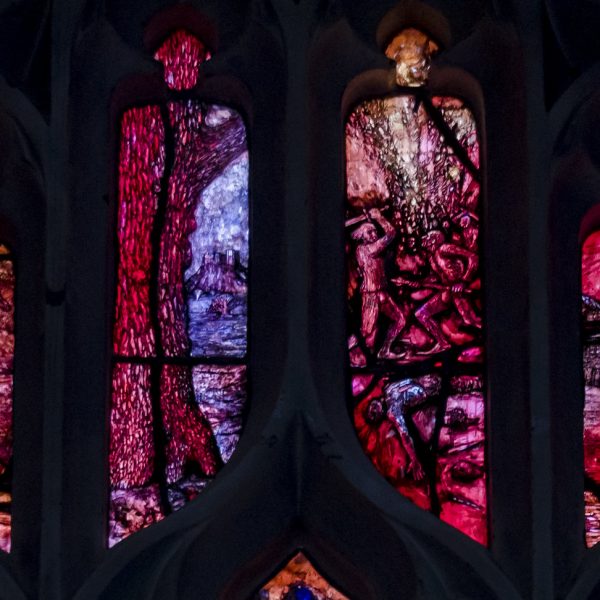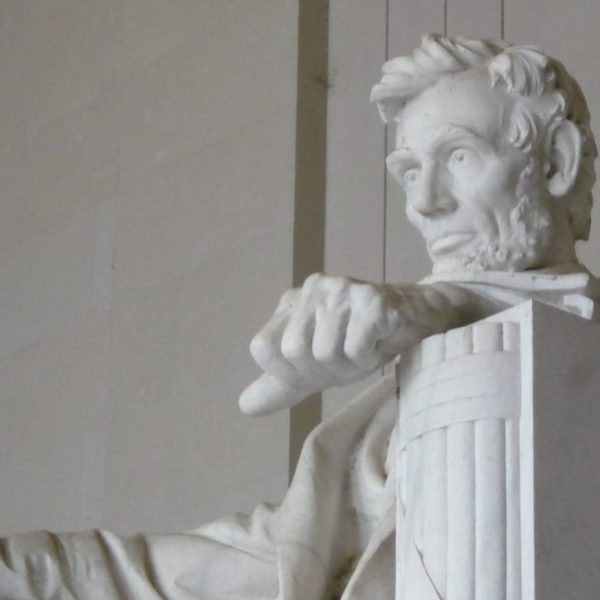John Edwards on His Life with Mary I
 Following his “Eminent Biography” post on his new book, Mary I: England’s Catholic Queen, presenting a striking re-characterization of this often misunderstood monarch, John Edwards now writes on his own research experiences and how he came to carefully retell her life.
Following his “Eminent Biography” post on his new book, Mary I: England’s Catholic Queen, presenting a striking re-characterization of this often misunderstood monarch, John Edwards now writes on his own research experiences and how he came to carefully retell her life.
John Edwards—
Anyone who tackles a biography of an English Tudor monarch enters an extraordinary minefield of belief and emotion that seems to be as active today as it has ever been. The lives of the Tudor monarchs still raise questions—about human psychology and political action—that stimulate passion and personal commitment, however vicarious and ill-founded these may be. Thus the biographer has not only to try and reconstruct the life of a historical figure, but also to engage with twenty-first century beliefs, prejudices and feelings.
Being brought up for my first few years in Devon, in south-west England, I absorbed the local hero-worship of Queen Elizabeth, and her “sea-dogs”, who drove the Spanish Don from our county and country, but not only did I see things rather differently, because of my Welsh ancestry, but my parents’ love of Spain and France, nurtured by their visits as students in the late 1930s, forced a different perspective. From very early on, I would not accept the prevailing view that the English seemed to have of themselves.
Later, while at school on the southern edge of Greater London and then at Oxford University, I also began to question the way in which the churches were functioning. I and my school-friends, who were all Christians, went to different local churches – Catholic, Anglican, Methodist – that had plenty of members, post-war, but very little to do with each other. As I studied these questions more, I decided that I really wanted to know why the one Church, that we talked about in our services and affirmed in the creeds, didn’t exist on the ground.
Especially when I reached The Queen’s College Oxford chapel in the late 1960s, and became involved with the ecumenical activity and enthusiasm that affected lots of people after the second Vatican Council, I grew ever more impatient with this destructive disunity and more anxious to find out how it had come about. This led inevitably to the sixteenth century, which I was studying as part of my history degree, under the segregated headings of “British” and “Foreign”. I have pursued both the historical and the directly religious aspects of this ever since.
 To write the life of a Tudor queen, and especially one who has been written about so much before, including a series of recent biographies in English and even one in Spanish, posed some basic problems. The main one is the lack of individual writings – diaries, memoirs, novels or poetry – such as might be expected from a more recent ruler, and even came from Mary’s half-sister and successor, Elizabeth. This raises the question of whether a ruler, once on the throne, has a personal life at all, in the manner of a twenty-first century figure.
To write the life of a Tudor queen, and especially one who has been written about so much before, including a series of recent biographies in English and even one in Spanish, posed some basic problems. The main one is the lack of individual writings – diaries, memoirs, novels or poetry – such as might be expected from a more recent ruler, and even came from Mary’s half-sister and successor, Elizabeth. This raises the question of whether a ruler, once on the throne, has a personal life at all, in the manner of a twenty-first century figure.
A “life” can all too easily turn into an account of the subject’s “life and times”, which is fine in itself but a different exercise. To explain how I approached the writing of this biography, I need to back to Mary’s descent from a Spanish royal family, the house of Trastámara.
I wrote my doctoral thesis on the government of Mary’s grandparents, Isabella of Castile and Ferdinand of Aragon, using archives in Andalusia that were then largely unexplored. Afterwards, I went on to study and publish on various social, political, economic and religious issues in Spanish history in the fifteenth and sixteenth centuries, and thus combined my two big concerns. These are to go deeply into the causes of disunity in the Christian church, especially in the West and to give Spanish history and culture their proper place in English people’s understanding of their own history, as well as that of other countries.
“My” Mary, then, is judged and understood, as far as possible, on her own terms. She is not seen as an embarrassment to English or Spanish history, but as a high-achieving woman. As well as gaining a throne in a spectacular coup and running the country determinedly and quite effectively, she had a deep religious life of her own, set in the midst, not only of her family experience, particularly in her relations with her father, but also in the split between Catholics and Protestants, which was becoming fixed in her lifetime.
My Mary also freely acknowledges, and is deeply influenced by, her Spanish heritage through her beloved mother Catherine, something that was spectacularly affirmed, though by no means without personal anguish, both for her and for her subjects, when she married her much younger cousin, Philip of Spain. His role, in relation to England in general and Mary in particular, receives unusually full coverage here, because it adds a new dimension to an understanding of the queen and of the place of her kingdom in the world. Philip, too, is liberated from his customary caricature, as a cold-hearted monster. Finally, and hardest of all, I tackle unflinchingly the reality of religious persecution that gave Mary her characterization as “Bloody”, though I do not claim to be able to explain fully how she and her contemporaries managed to combine, apparently without seeing any contradiction, faith in a loving God with killing fellow Christians. In this case, as always, to explain is not to excuse.
While I was writing this book, I looked at the portrait of Mary by Antonis Mors (Antonio Moro), in the Museo del Prado in Madrid, which is on the cover of this book. Trying to match Mary’s piercing, yet perplexed, eyes, I longed to ask her lots of questions, about her life and her government, but I have been forced, like everyone else who continues to be interested in her, to do the best I can with what has been left, in image and writing.
John Edwards is Modern Languages Faculty Research Fellow in Spanish, University of Oxford. His recent books include The Spanish Inquisition, Ferdinand and Isabella, and Isabella: Catholic Queen and Madam of Spain. He lives inOxford,UK.



